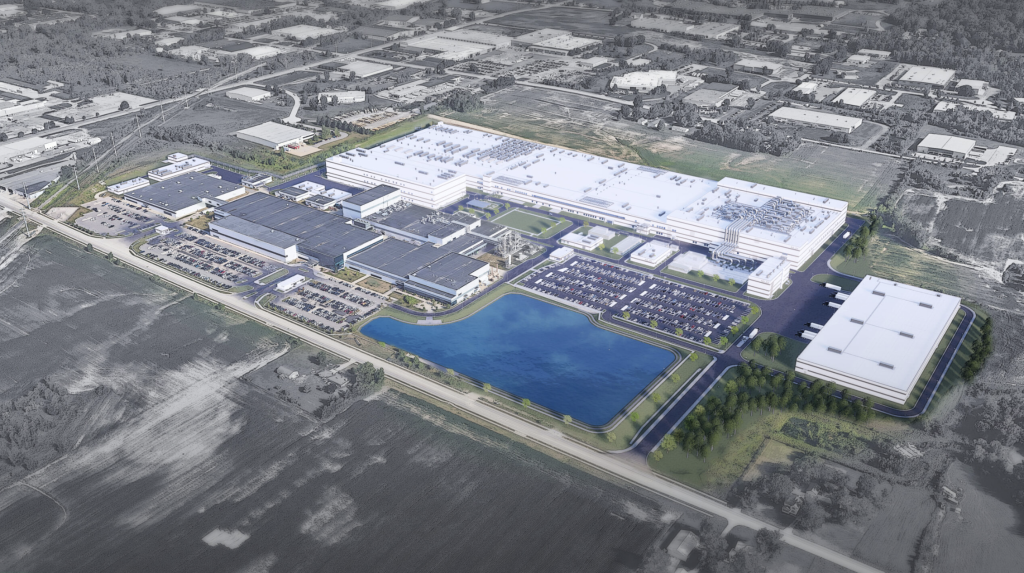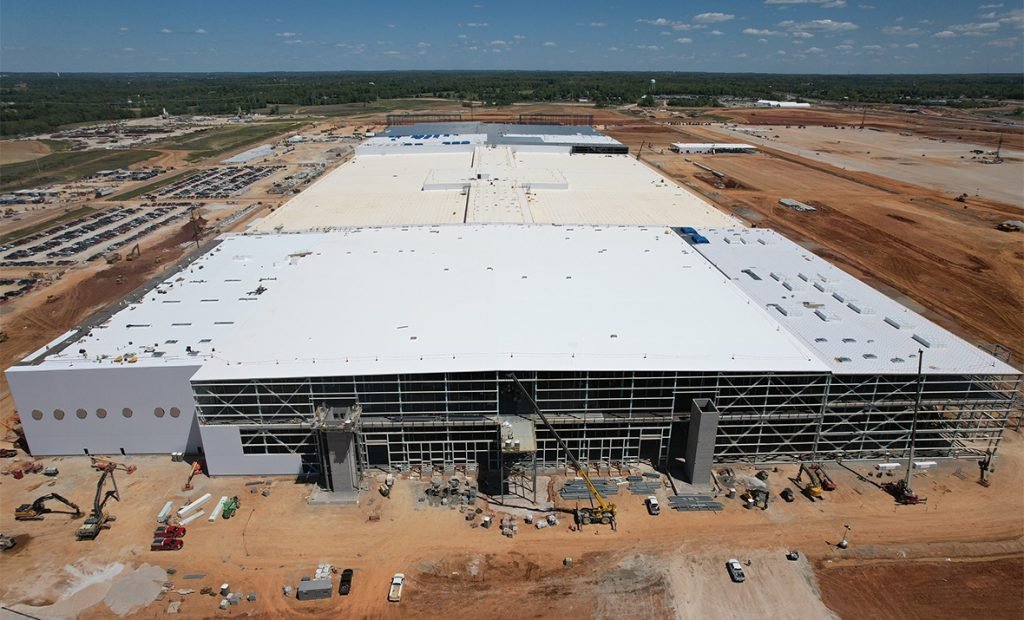Introduction
The electric vehicle is, in a lot of ways, a battery on wheels. If you don’t get the battery right, you won’t get the EV right.
Manufacturing a durable, efficient and safe battery that can be used for several years is an incredibly complex that takes several years and iterations to get right. Its safe to say that the West is behind China by at least a few years (if not decades) when it comes to the end-to-end manufacturing of batteries. It is a well known secret that even the most American made EV, a Tesla, is to large extent reliant on Chinese batteries.
The Biden administration’s Inflation Reduction Act (IRA) tried to rectify this by trying to incentivize into reality the emergence of a domestic battery manufacturing industry. Several new battery factories are undergoing construction as a result. Sure enough, the new Trump administration has introduced new uncertainties into the mix, and some players like Kore Power have paused their plans, but we think the battery manufacturing trend is here to stay for a long time. Having a strong domestic manufacturing industry is critical to US national sovereignty, after all its not just EVs that need batteries. Everything from energy storage to autonomous drones are going to require the best batteries to be produced domestically.
We decided to put together a detailed overview of all the battery manufacturing facilities in the US to help you understand what’s really going on.
A Refresher on Battery Chemistries
But before we go through the list of factories, we wanted to provide you with a brief refresher on the battery chemistries used in the EV and storage industry today. In a previous article on GCF, we went through some of these battery chemistries in a lot of detail. If you don’t have the time to read another article, fret not, here is a short and sweet overview!
NMC (Nickel Manganese Cobalt): NMCs are the predominant battery chemistry in America today. They are preferred for their high energy density (and resulting higher range) but the tradeoff is that they contain cobalt which is often unethically sourced from central Africa. They are in a lot of ways yesterday’s battery chemistry of choice and will eventually be replaced by other battery chemistries.
LFP (Lithium Iron Phosphate): LFPs are gradually becoming the de facto battery chemistry of choice for EVs and storage. They don’t have the energy density of an NMC but they are a lot more safer and last longer. More importantly they are cobalt-free, which means companies can ethically source it.
NCMA (Nickel Cobalt Manganese Aluminum): NCMA batteries are almost the same as NMC batteries except that they contain less cobalt, more nickel, and still manages to deliver the same or better performance. While traditional NMC batteries might contain 10-20% cobalt in the cathode, NCMA formulations can reduce this to around 5% or even less.
NCMA batteries then uses higher nickel content (often 80%+) to maintain the energy density despite the reduced cobalt.
Battery Factories That Are Currently Operational
While battery manufacturing for EVs is still relatively new, there are a couple of pioneering factories that have been at it for a few years
LG & GM
Battery Chemistry Focus: NCMA
LG Energy Solution’s Holland, Michigan plant has been quietly producing cells since 2012. This facility initially started producing batteries for the first-generation Chevrolet Volt and has since undergone several expansions. LG announced plans to invest a further $1.7 billion into its facility in 2022.

GM obviously seems to be a big fan of LG and sees it as a key supplier. Their relationship has been reinforced with the establishment of the Ultium partnership in which LG & GM each have a 50% financial stake. The partnership was announced in 2019 and involved a $7 billion investment that would expand into new facilities in Lordstown, Ohio (operational), Spring Hill, Tennessee (under construction) and Lansing, Michigan (under construction).
So far, the plant has focused on producing NCMA batteries for both the Ultium platform and LG’s other customers. But it will be interesting to see if the new plants in Tennessee and Lansing, Michigan will start producing some of the newer battery chemistries.
Panasonic & Tesla
Battery Chemistry Focus: NMC and NCA
The Nevada Gigafactory was Elon’s and Panasonic’s first foray into manufacturing batteries in the U for storage and EVs.

Unlike the LG/GM partnership and Ultium joint venture, the Tesla – Panasonic relationship is a bit more quirky. The arrangement is such that while Tesla owns the land and the physical structure, the rest of the equipment ownership is divided into cell production (which is owned by Panasonic) and battery pack production (which is owned by Tesla). Tesla also manufactures its drive units at this factory, so there is a lot more happening at this factory than just battery production.
Tesla is not fully dependent on this plant for its batteries. It procures LFP batteries directly from Chinese battery manufacturers such as CATL. But these imported batteries are subject to tariffs and often disqualify Tesla vehicles from receiving lucrative federal tax credits, which makes the Nevada Gigafactory a strategically important resource for Tesla.
SK ON & Ford
Battery Chemistry Focus: NMC
SK ON is part of South Korea’s SK Group conglomerate which has its roots in oil and gas trading. The SK Group has invested almost $2.6 billion into two plants based out of Commerce, GA. What makes the Commerce, GA facility particularly notable is that it represented the largest single investment by a South Korean company in the United States when it was announced. The site itself is massive—nearly 300 acres—and the facilities combined span about 2.4 million square feet, roughly equivalent to 42 football fields.

The Commerce facility was started to make batteries for Ford’s F-150 Lightning and Transit Vans. In 2021, SK and Ford expanded the relationship by forming a JV named BlueOval SK that would invest up to $11.4 billion across two plants in Tennessee and Kentucky. While the Georgia facilities measure their capacity in single-digit gigawatt-hours, the BlueOval facilities will produce well over 100 GWh combined—enough for more than a million F-150 Lightning-sized vehicles annually
Battery Factories Under Construction
StarPlus Energy (Stellantis & Samsung SDI)
Battery Chemistry Focus: NMC
StarPlus Energy represents Stellantis’ somewhat belated entry into the battery manufacturing game, formed as a 50/50 joint venture with Samsung SDI. The partnership was announced in 2021, with Stellantis playing catch-up while competitors like Ford and GM had already secured their battery partnerships with SK and LG respectively. They’re investing more than $6.3 billion across two massive facilities in Kokomo, Indiana, where Stellantis has operated since 1937.
The first facility broke ground in October 2022 with a $3.5 billion investment and will produce about 33 GWh annually—enough for roughly 550,000 vehicles. A second facility was announced in May 2023 with a similar investment and capacity. Together, these plants will employ about 2,800 workers when fully operational. This partnership marks Samsung SDI’s first manufacturing presence in the United States, unlike their Korean competitors LG who established operations earlier.
The batteries will be used to power vehicles across Stellantis’ extensive brand portfolio including Jeep, Ram, Dodge, and Chrysler. It’s great for Samsung to have a captive customer in Stellantis but part of the challenge for Samsung is that Stellantis isn’t Tesla, or Ford, or GM, or even Rivian, in that it is not that committed to the US EV market. The other challenge is that its competitors already have a multi-year head start.
Our Next Energy (ONE)
Battery Chemistry Focus: LFP and anode-free lithium metal
Most battery factory partnerships in the US to date have seen a US based EV manufacturer partner with a foreign (usually Asian) company with expertise in battery cell manufacturing. Our Next Energy (ONE) is an attempt to create a standalone US battery manufacturing company that can innovate domestically on its own without having to depend on foreign expertise.
Founded in 2020 by Mujeeb Ijaz, a battery engineering veteran with experience at Apple, A123 Systems, and Ford, ONE has secured over $370 million in funding from investors including BMW i Ventures and Bill Gates’ climate fund. They’re establishing a $1.6 billion manufacturing facility called “ONE Circle” in Van Buren Township, Michigan, converting an existing 660,000 square foot building with plans to employ 2,100 people when fully operational.
ONE’s main innovation is a unique dual-chemistry approach with two distinct systems. Their Aries™ system uses LFP cells for daily driving range (100-150 miles), while their more advanced Gemini™ system combines LFP with anode-free lithium metal cells to extend range—they’ve demonstrated a modified Tesla Model S traveling 752 miles on a single charge. While the Gemini architecture is impressive the question remains if ONE can manufacture these more complex batteries at scale and with the same quality as CATL, LG and Panasonic.
CATL
CATL stands as the undisputed global leader in battery manufacturing, with over 20 years of experience and established dominance in LFP technology. But despite supplying numerous American EV makers including Tesla, CATL has yet to establish US manufacturing operations.
CATL’s cautious approach to American production has evolved from early plans for a $5 billion North American facility to a more strategic technology licensing arrangement with Ford in Marshall, Michigan. This licensing workaround would allow Ford to produce CATL-designed batteries while potentially qualifying for IRA incentives. Obviously a licensing deal is not ideal from a US perspective as it keeps all the IP with CATL, but its a start.
If CATL eventually establishes domestic production, it would transform the US battery landscape by providing local access to world-class LFP technology without tariff penalties. For now, this critical gap in domestic manufacturing capabilities remains unfilled as geopolitical tensions continue to shape the industry
Conclusion
America’s battery manufacturing boom is just beginning. While these multi-billion dollar factories will take years to reach full production, they represent a critical step toward energy independence in the 21st century. Batteries have become the new oil—a strategic resource that determines economic and technological sovereignty. By establishing domestic production capacity now, the US is laying the foundation for a self-reliant EV industry and securing its position in the electrified future, regardless of political shifts.
If you prefer a slightly cheaper level 2 charging station, check out Autel’s charging station.